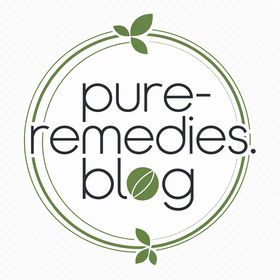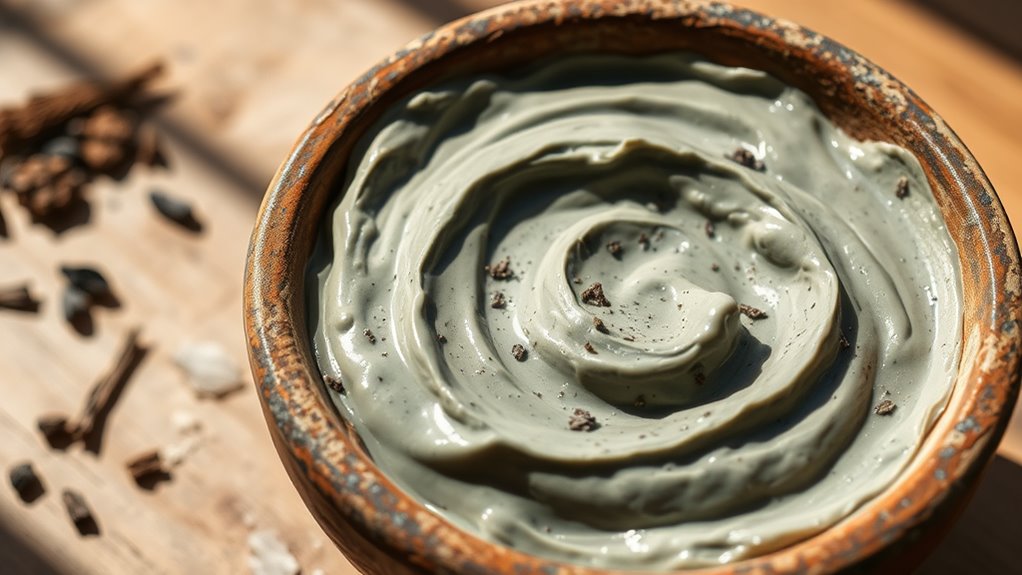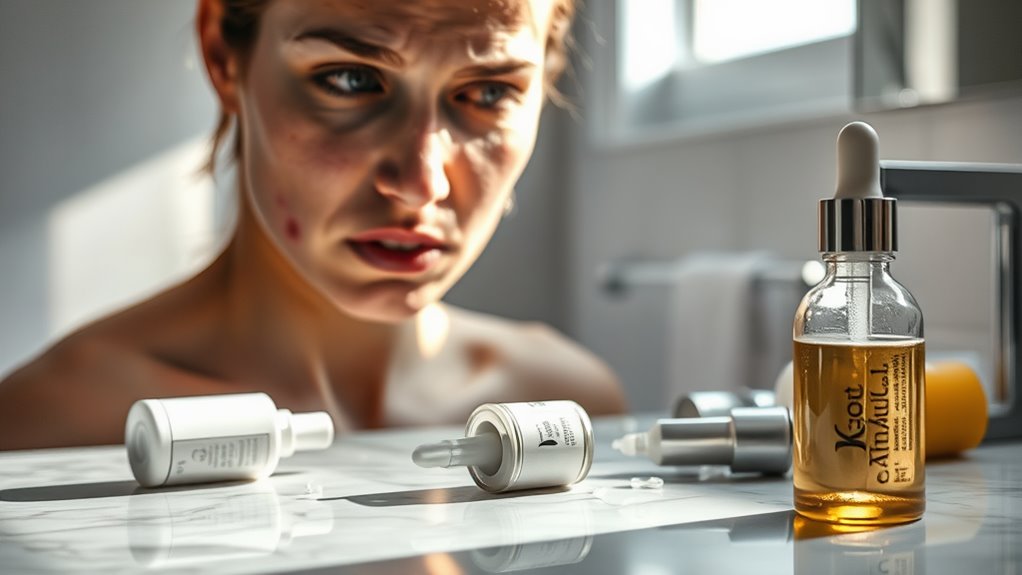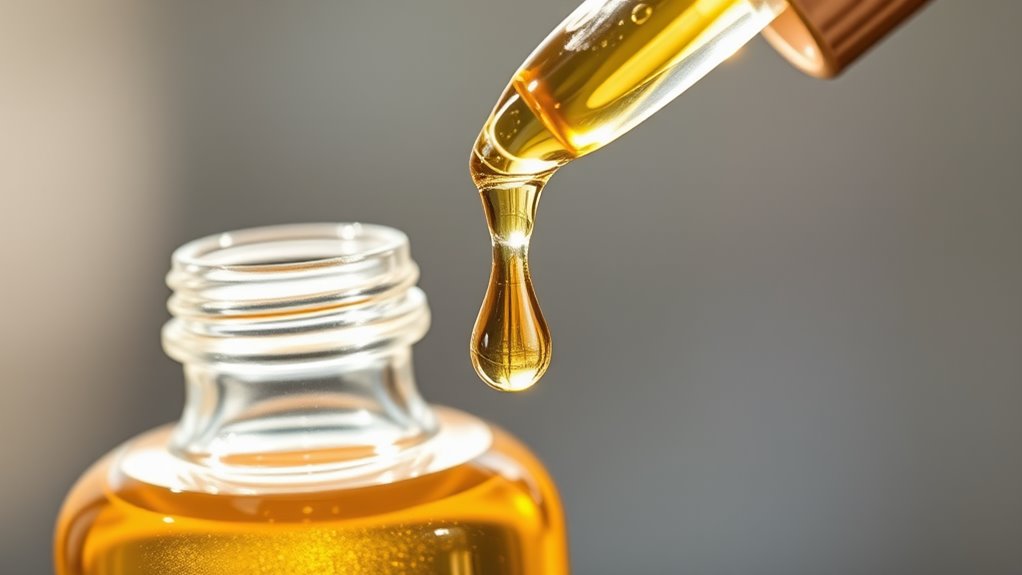Detox Your Skin Naturally With This Homemade Clay Mask!
Detox your skin naturally with a homemade clay mask featuring bentonite clay and aloe vera—it’s a simple way to draw out impurities and reduce oil buildup. You’ll mix these in a non-metal bowl, apply to your clean face, and let it sit before rinsing gently for a refreshed feel. This evidence-based approach promotes clearer, balanced skin based on their toxin-binding properties. You’ll find more on clay types and routines just ahead.
Key Takeaways
- A homemade clay mask uses natural ingredients like bentonite clay to deeply cleanse pores and remove toxins for healthier skin.
- Bentonite and kaolin clays are key for absorbing excess oil and impurities, making them ideal for natural detoxification.
- Prepare the mask by mixing clay with apple cider vinegar in a non-metal bowl, then apply evenly to clean skin.
- Let the mask sit for 10-15 minutes before rinsing with lukewarm water to maximize its detoxifying effects.
- Follow up with a moisturizer and SPF to hydrate skin and protect it from environmental damage after use.
Benefits of a Homemade Clay Mask
Because clay naturally absorbs impurities, you’ll enjoy several key benefits from a homemade clay mask, including deep pore cleansing, reduced oil buildup, and improved skin texture. Moreover, this mask can also offer relief for skin conditions like eczema relief through its natural soothing effects.
When you prepare and apply a DIY clay mask, it actively draws out excess sebum and environmental pollutants, promoting clearer pores and preventing acne flare-ups.
Evidence from dermatological studies indicates that this process enhances circulation, leading to a more even skin tone and reduced inflammation.
You’ll notice your skin feels smoother and looks healthier after consistent use, as the mask’s absorbent properties help balance moisture levels without stripping natural oils.
By incorporating a DIY clay mask into your routine, you’re supporting long-term skin health, making it an effective, natural option for detoxification.
This approach minimizes the need for harsh chemicals, allowing you to achieve radiant results at home.
Additionally, this homemade clay mask supports anti-aging benefits by helping to reduce wrinkles and maintain youthful skin through natural, at-home remedies.
Key Ingredients for Natural Detoxification
To create an effective DIY clay mask, you’ll need just a few key ingredients that naturally draw out toxins and impurities. Bentonite clay stands out as a primary component; its negatively charged particles actively bind to positively charged toxins, promoting deep cleansing based on geological and dermatological studies.
You’ll also want kaolin clay, a gentler option rich in minerals like silica and zinc, which helps absorb excess oil without stripping your skin’s natural barrier, as supported by cosmetic research.
For enhanced detoxification, incorporate activated charcoal, which effectively adsorbs impurities and pollutants, drawing from evidence in toxin-removal applications.
Finally, add aloe vera gel for its soothing, anti-inflammatory properties, backed by botanical studies that confirm its role in reducing irritation during detox processes. Moreover, incorporating beetroot benefits into your daily routine can further support overall detoxification and liver health.
These ingredients work synergistically to refresh your skin naturally, and incorporating this mask can complement liver detoxification practices for overall wellness. (141 words)
Simple Steps to Prepare Your Clay Mask
To prepare your clay mask effectively, you’ll first gather the key ingredients like bentonite clay and apple cider vinegar, ensuring they’re fresh and measured accurately. Bentonite clay is particularly effective because it can bind to toxic heavy metals.
Once you have everything, mix them thoroughly in a non-metal bowl to activate the clay’s detoxifying properties without clumps.
Finally, apply the mask evenly to your clean face, letting it sit for the recommended time to maximize its benefits.
This mask can also aid in heavy metal detoxification by helping to draw out toxins from the skin.
Gather Ingredients
Gather the essential ingredients to prepare your simple clay mask. Choosing evidence-based components ensures an effective, natural detox, drawing on studies that highlight their skin benefits, like reducing inflammation and impurities.
To grab your attention and streamline the process, here’s a focused list of what you’ll need:
-
Bentonite clay: This mineral-rich powder absorbs toxins and excess oil, as confirmed by dermatological research on its pore-cleansing effects.
-
Apple cider vinegar: A natural astringent that balances skin pH, helping combat acne based on clinical evidence from skin health studies.
-
Raw honey: Offers antibacterial and moisturizing properties, supported by research showing its role in soothing and protecting the skin barrier.
Mix Thoroughly
Once you’ve gathered your ingredients, mix them thoroughly to activate the mask’s detoxifying properties, drawing on research that shows even blending enhances absorption and efficacy.
Begin by adding the clay powder to a clean, non-reactive bowl to prevent any chemical interference. Slowly incorporate your liquids, such as water or natural oils, while stirring with a wooden or plastic spoon—avoid metal to maintain purity, as studies in cosmetic science confirm it can alter clay’s pH.
Continue mixing in a circular motion for 2-3 minutes until the mixture forms a uniform, creamy paste without lumps. This step is crucial, as evidence from dermatological research highlights that thorough blending distributes active compounds evenly, boosting the mask’s ability to draw out impurities and support skin barrier function.
Apply Mask
With your mask mixed into a smooth paste, apply it evenly to your cleansed face for maximum detox benefits. This ensures the clay’s absorbent properties can effectively draw out impurities and excess oil, promoting clearer, healthier skin as supported by dermatological studies on natural clays.
To apply effectively:
-
Use clean fingers or a brush to spread a thin, even layer across your face and neck, avoiding sensitive areas like the eyes and mouth for safe application.
-
Let the mask sit for 10-15 minutes until it’s nearly dry; this allows it to bind to toxins, reducing pore congestion based on evidence from clay’s mineral composition.
-
Rinse gently with lukewarm water in circular motions to exfoliate and remove the mask, then pat your skin dry and apply a moisturizer to restore balance and prevent dryness.
Research shows regular use can enhance skin texture and reduce inflammation, making this a simple, evidence-based routine.
Application Techniques for Optimal Results
Applying a clay mask effectively maximizes its detoxifying benefits. Research shows that precise techniques enhance its ability to extract impurities and improve skin clarity.
You’ll start by cleansing your face thoroughly to remove oils and debris, ensuring better adhesion. Using clean fingers or a brush, apply a thin, even layer over your face and neck, avoiding sensitive areas like the eyes and lips to minimize irritation.
Gently pat or massage in upward motions; this promotes blood flow and boosts absorption without overstimulating the skin. Monitor the drying time—typically 10-15 minutes—and remove it before it fully hardens to prevent tightness.
Rinse with lukewarm water in circular motions, then pat dry gently. Consistent application, done correctly, yields noticeable results like refined pores and a refreshed complexion. For added anti-aging benefits, consider incorporating vitamin E into your routine to help reduce wrinkles and restore youthful skin. Always test on a small area first for safety.
Additionally, applying this clay mask as part of an overnight remedy can help reduce acne-related inflammation and redness for improved skin health.
Tips for Selecting the Right Clay Type
When you’re creating a DIY clay mask, choose a clay type that aligns with your skin’s specific needs for the best detox results. Incorporating essential oils into your mask can provide additional benefits, similar to their use in promoting healthy hair.
Bentonite clay, for instance, effectively absorbs excess oil from oily or acne-prone skin, while kaolin offers gentle purification for sensitive or dry types.
Matching your selection to your skin type ensures you avoid irritation and maximize benefits based on dermatological studies.
For added skin relief, consider blending in coconut oil to leverage its natural anti-inflammatory effects.
Choose Clay Type
Selecting the right clay type is crucial for an effective DIY clay mask, as each variety targets specific skin concerns based on its mineral composition.
You’ll find that clays like bentonite, kaolin, and rhassoul each have unique properties derived from their geological sources, influencing absorption and detoxification.
By focusing on evidence from dermatological studies, you can make informed choices that enhance your mask’s performance.
-
Examine mineral composition: Look for clays rich in minerals like silica or magnesium, which studies show improve skin barrier function and reduce impurities.
-
Prioritize purity and sourcing: Choose high-quality, naturally sourced clays to avoid contaminants, as research indicates pure options minimize irritation risks.
-
Consider particle size: Opt for finely ground clays for better adhesion and efficacy, backed by evidence that finer particles enhance absorption without clogging pores.
Match to Skin
Once you’ve identified the ideal clay through its mineral composition, you’ll want to align it with your specific skin type to maximize benefits. Research indicates that clays vary in absorbency and gentleness, so bentonite works best for oily skin by drawing out impurities, while kaolin suits sensitive types with its mild, soothing properties. This ensures effective detoxification without irritation.
To help you choose, here’s a breakdown:
| Clay Type | Best For | Key Benefits |
|---|---|---|
| Bentonite | Oily/Acne-prone | Absorbs excess oil, reduces breakouts |
| Kaolin | Sensitive/Dry | Gently cleanses, minimizes inflammation |
| Rhassoul | Normal/Combination | Balances hydration, improves elasticity |
| French Green | Oily/Problematic | Detoxifies deeply, enriches with minerals |
| Fuller’s Earth | Oily/Impure | Clears pores, controls sebum production |
Enhancing Your Mask With Essential Oils
To boost your clay mask’s effectiveness, try incorporating essential oils, which offer targeted benefits like soothing inflammation or balancing oil production, as supported by studies on aromatherapy compounds. Additionally, eucalyptus oil provides antimicrobial benefits that can help combat skin impurities, drawing from research on its therapeutic properties.
These natural extracts enhance your mask’s detoxifying power while providing additional skin support, drawing from clinical research on their bioactive properties.
-
Add tea tree oil: This potent oil, backed by studies in the Journal of the American Academy of Dermatology, fights bacteria and reduces acne, making it ideal for oily skin.
-
Incorporate lavender oil: Research in Evidence-Based Complementary and Alternative Medicine highlights its anti-inflammatory effects, helping to calm irritated or sensitive skin.
-
Use frankincense oil: As per findings in Phytotherapy Research, it promotes cell regeneration, aiding in a smoother, more even complexion without overwhelming your mask.
Furthermore, certain essential oils can extend benefits to pain relief by addressing inflammation, as evidenced in guides on their therapeutic applications.
Signs That Your Skin Needs a Detox
Your skin might show clear signs that it’s overdue for a detox, such as persistent breakouts or a dull complexion, often linked to toxin buildup according to studies in dermatology journals like the Journal of Investigative Dermatology. You might notice enlarged pores or uneven texture, as research in the British Journal of Dermatology highlights how environmental pollutants contribute to these issues. Excessive oiliness or sensitivity can also signal toxin overload, backed by clinical observations in skin health reviews. Additionally, avoiding common skincare mistakes can help maintain skin barrier function for better overall skin health.
To help you identify these signs, here’s a breakdown:
| Sign | Description | Evidence Source |
|---|---|---|
| Persistent Breakouts | Frequent pimples or acne flares | Journal of Investigative Dermatology |
| Dull Complexion | Lack of glow, appearing tired | Archives of Dermatological Research |
| Enlarged Pores | Visible, clogged pores | British Journal of Dermatology |
| Excessive Oiliness | Greasy feel despite cleansing | Clinical Dermatology Reports |
| Uneven Texture | Rough, bumpy skin surface | International Journal of Cosmetic Science |
Recognizing these indicators helps you act proactively for healthier skin. To address these issues effectively, consider incorporating natural recipes from everyday kitchen ingredients into your routine. (165 words)
Common Ingredients to Avoid in Skincare
When you’re making your DIY clay mask, you should steer clear of parabens, as research links them to endocrine disruption.
Sulfates can strip your skin’s natural barrier, leading to irritation and dryness.
Phthalates pose potential health risks, including toxicity concerns, so checking ingredient lists helps protect your skin during detox.
Harmful Parabens Explained
Parabens, synthetic preservatives commonly found in skincare products, disrupt hormonal balance and raise health concerns. You encounter them in everyday items, where they act as endocrine disruptors, potentially increasing cancer risks and fertility issues, based on research from the FDA and environmental health studies.
By avoiding these chemicals, you’re taking a proactive step toward safer skincare routines.
-
Identify common types: Scan labels for methylparaben, ethylparaben, or propylparaben in lotions and creams to spot potential hazards.
-
Understand health impacts: Evidence links parabens to estrogen mimicry, which can affect hormone levels and skin sensitivity over time.
-
Choose safer options: Select products with natural preservatives like vitamin E, reducing your exposure while maintaining efficacy.
Sulfates to Avoid
Sulfates, potent surfactants like sodium lauryl sulfate, often lurk in cleansers and shampoos, stripping your skin’s natural oils and causing irritation.
These harsh chemicals disrupt your skin barrier, leading to dryness, redness, and potential allergic reactions, as supported by dermatological studies showing increased transepidermal water loss.
You can identify them on ingredient lists by names like ammonium lauryl sulfate or sodium laureth sulfate, which are common in foaming products.
To protect your skin, opt for sulfate-free alternatives that maintain your natural moisture balance, aligning with the gentle approach of our homemade clay mask.
Remember, choosing cleaner ingredients helps prevent long-term sensitivity and supports overall skin health, backed by research from the American Academy of Dermatology.
Phthalates and Risks
Phthalates, synthetic chemicals often added to fragrances and plastics in skincare products, disrupt your hormonal balance and pose serious health risks.
These endocrine disruptors can linger in your body, linked to fertility issues and developmental problems, as supported by studies from the Environmental Working Group. By avoiding them, you’re making a smart choice for your health and the environment.
To help you steer clear, here’s what you need to know:
-
Endocrine Disruption: Phthalates mimic hormones, interfering with your thyroid and reproductive systems, increasing infertility risks per research from the National Institutes of Health.
-
Reproductive Harm: Exposure correlates with lower sperm counts and birth defects, as evidenced in a Journal of Clinical Endocrinology & Metabolism study.
-
Cancer Links: Some phthalates are associated with breast and liver cancers, according to the World Health Organization, urging you to check product labels carefully.
Post-Mask Care for Radiant Skin
After removing your clay mask, gently pat your skin dry and apply a lightweight, hydrating moisturizer to restore its natural barrier, as studies show this step boosts radiance by locking in moisture and reducing irritation.
You’ll then want to avoid immediate exfoliation, which research links to increased sensitivity; instead, use a pH-balancing toner to soothe and stabilize your skin’s microbiome, promoting long-term health.
Evidence from dermatology studies highlights that incorporating antioxidants, like vitamin C serums, can enhance post-mask glow by neutralizing free radicals.
Don’t forget hydration—drinking water supports cellular repair, while applying a broad-spectrum SPF protects against environmental damage, ensuring your skin remains vibrant and resilient.
Regular routines, backed by clinical trials, minimize inflammation and sustain that fresh, detoxed appearance.
Variations of Clay Masks for Different Skin Types
While everyone’s skin is unique, customizing your clay mask to match your skin type ensures better results, as research from dermatology journals shows that specific clays address individual needs effectively.
For instance, studies indicate that selecting the right clay can minimize irritation and enhance absorption.
To tailor your mask, consider these evidence-based variations:
-
For oily skin****: Use bentonite clay, which draws out excess sebum and impurities, as confirmed by a 2018 dermatology study showing reduced pore size and oil production.
-
For dry skin****: Opt for kaolin clay mixed with aloe vera; research from the Journal of Cosmetic Dermatology highlights its gentle hydration and barrier repair properties.
-
For sensitive skin*: Choose French green clay with chamomile; evidence from clinical trials demonstrates its *anti-inflammatory effects, reducing redness without stripping moisture.





